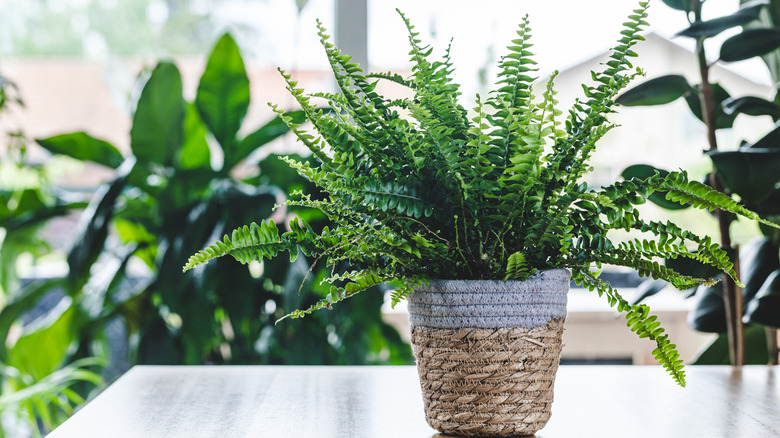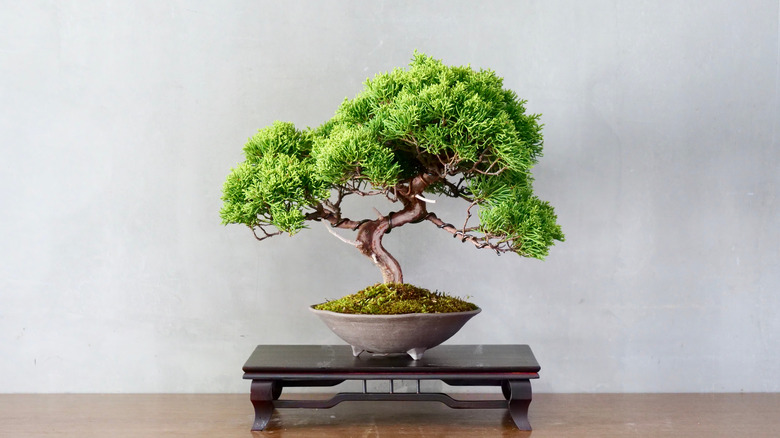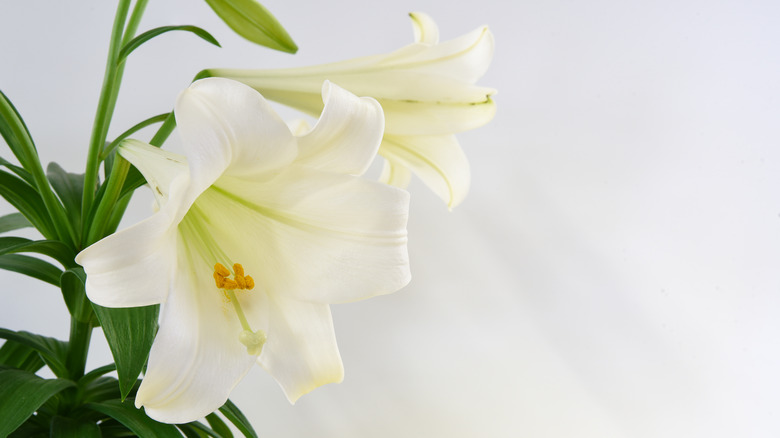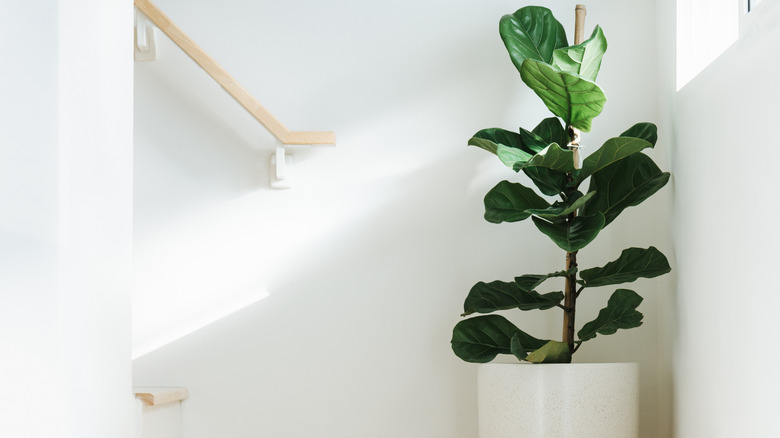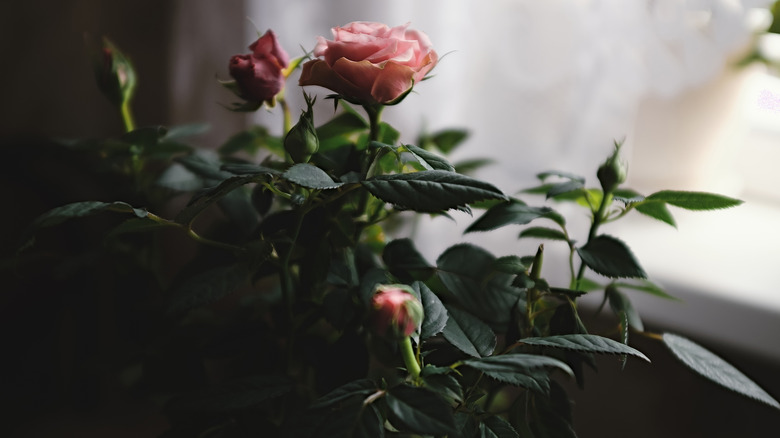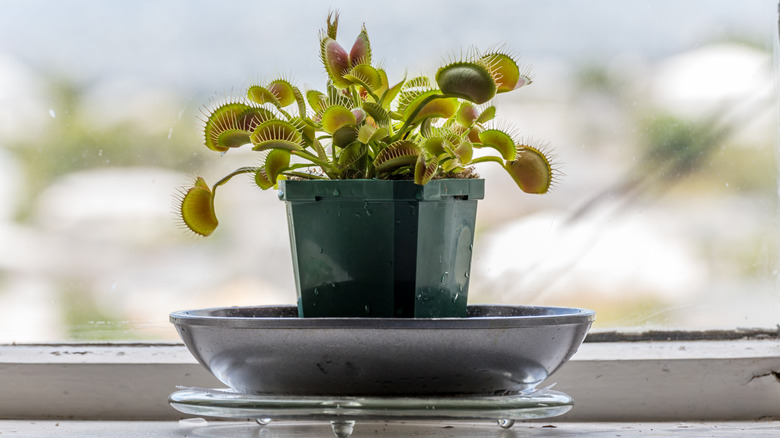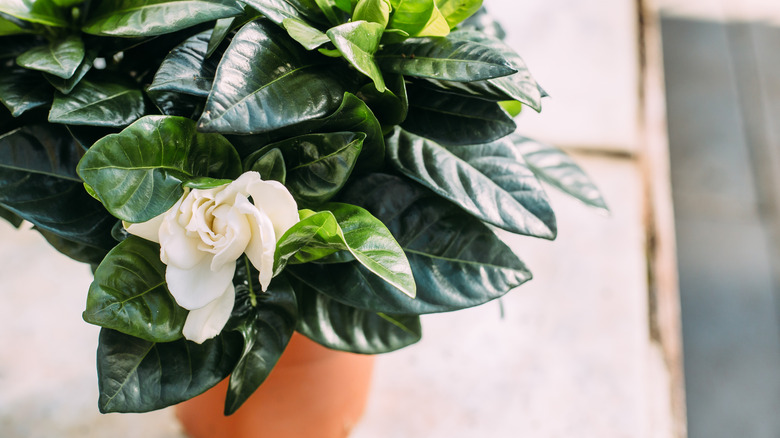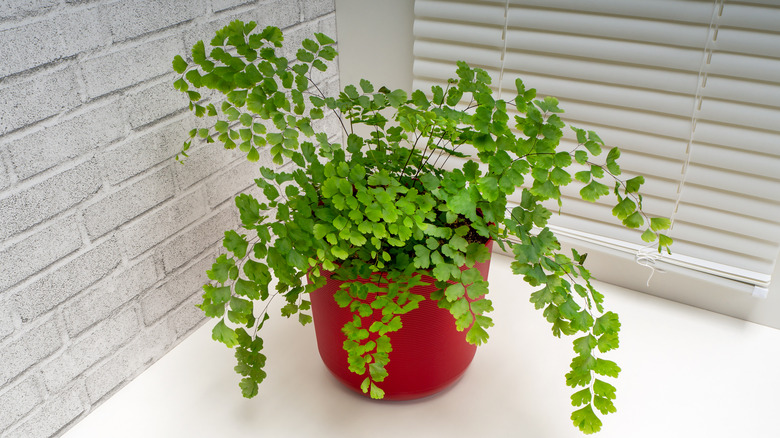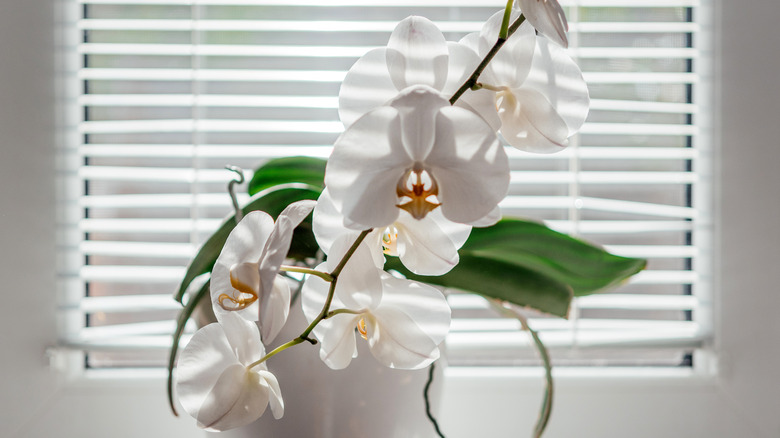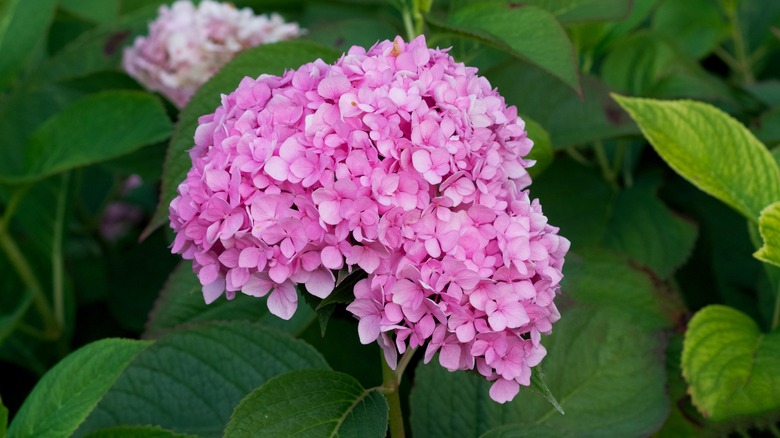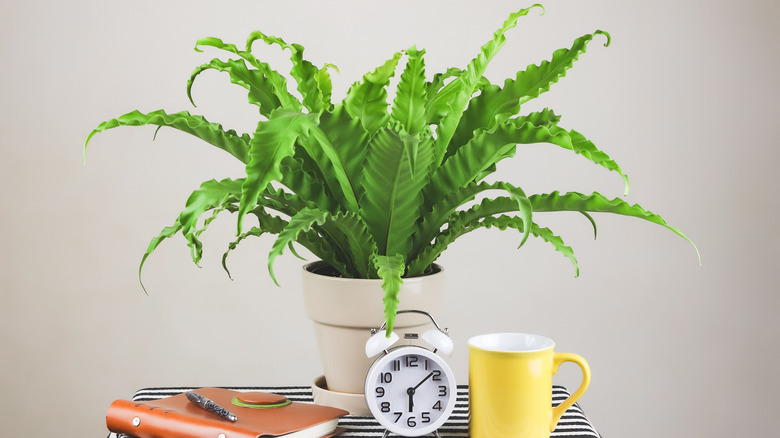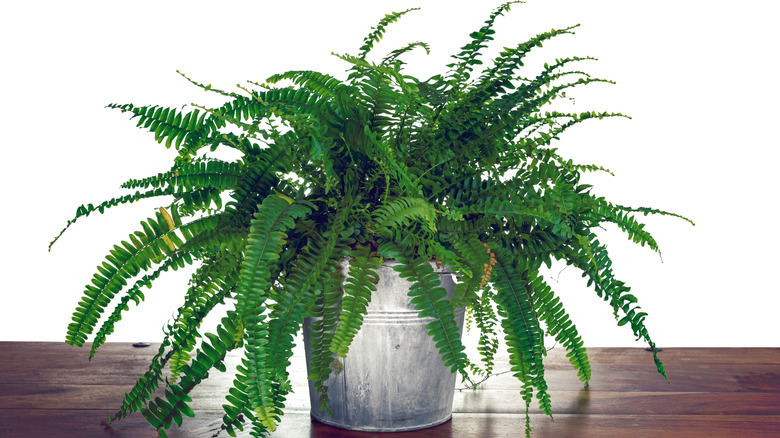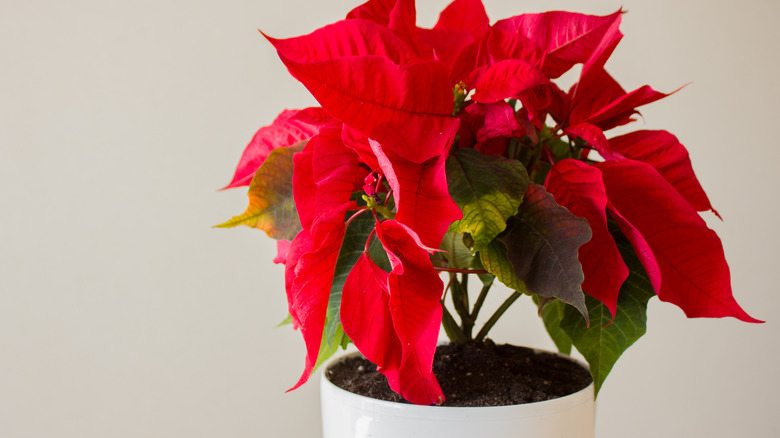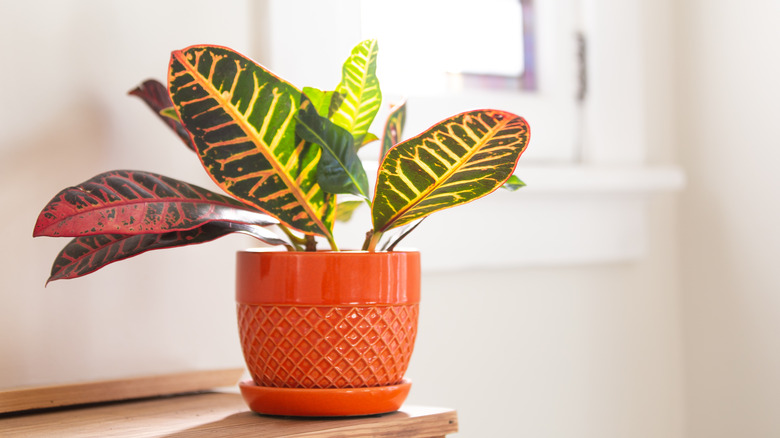High Maintenance House Plants To Avoid If You Live A Busy Life
Studies have shown that adding greenery to your home has many health benefits. But if you live a busy life, high-maintenance houseplants will do everything but make your life easier. There are several things that all plants need that could complicate your life in general. For example, all plants need proper light, watering, and fertilizer, and they need to be repotted to prevent them from becoming rootbound. There are also a handful of pests you must look for.
But certain plants are more high-maintenance than others. From frequent watering to quirky habits, these houseplants could wreak havoc on your calm or seriously stress you out when they fail to thrive. You could spend days or months moving them around and adjusting how you treat them, all to no avail. And if you start thinking they're just like all your other houseplants, you are in serious trouble. If your goal is to bring serenity into your life, you should steer clear of the following greenery.
Bonsai tree
Bonsai trees are commonly considered difficult plants to grow indoors and outdoors. The truth is that they are finicky. The biggest mistake people make when choosing to add one to their home is not thinking it through. Bonsais are tiny trees, a fact most people who purchase them fail to consider.
Like any other plant, they have specific needs. In some cases, very specific ones. Certain species do best only in warm environments, while others thrive in the cold. Some need lots of sun and water, and regular pruning. But other varieties don't like to be fussed over quite so much. Checking them once a day and tending to them accordingly works best, but this is a lot if you have a busy life.
The bonsai also undergoes very few changes in appearance as it ages. It could go a decade or more without looking any different. This is fine for a bonsai tree, but it may leave you feeling like it is not successfully growing, especially if you don't have the time to tend to it daily.
Easter lily
Who doesn't love a gorgeous Easter lily received as a holiday gift? But keeping them alive after Easter can be a challenge, especially if you're hoping to keep them indoors and you live a busy life. There could be dozens of reasons you don't have the time to maintain your Easter lilies. Maybe your kids have a packed schedule of soccer and ballet, cross-country, theater, and choir practice that keeps you constantly on the go. Or perhaps you don't have kids and just work long hours.
What makes these plants challenging is that, while they need lots of natural sunlight, it must be indirect. Your plants must be near a window but in a climate-controlled environment. It should not be warmer than 65 to 75 degrees. And you need to water it appropriately, which may be the most challenging task. When determining the best way to water your Easter lilies, the rule of thumb is to keep the soil damp to the touch but not wet. Overwatering is one of the fastest ways to kill an Easter lily, but underwatering can also be the kiss of death. If your schedule doesn't allow for checking it regularly and fertilizing weekly, this plant is unlikely to thrive in your home.
Fiddle leaf fig
The fiddle leaf fig is a gorgeous, dark green, leafy plant that looks lovely in homes but can be a bit of a diva. Overwatering can cause root rot. However, underwatering can lead to brown spots and leaf curl.
The plant is also susceptible to sunburn. It can overheat in direct sunlight or warmer climates, but hates cold breezes. You must strategically plan where to locate it in your home, regardless of your climate. It's unlikely to flourish by a window in cooler temperatures, where it might be exposed to those cold drafts, even though it likes the indirect sun. Conversely, it won't do well when the air conditioning kicks on in your warmer home, despite being by a window and receiving the sunlight it needs.
Other common problems with this houseplant are fertilizer burn, bruising, and scratches on the leaves due to moving. Fungal and bacterial infections are also common and can be difficult to cure. If you don't have the time and patience to spare, this may not be the houseplant for you.
Miniature roses
The idea of keeping a miniature rose bush inside your house year-round can be appealing, but the option is fraught with difficulties. One of the most significant issues with this houseplant is the need for natural temperatures that cannot be replicated indoors. The inside of a home is artificially cooled and heated to keep its residents comfortable. That is not the best option for the miniature rose, which needs a cold snap to bloom the following season properly.
If you've grown roses outdoors, you'll know that one of the complications is that each type has its own preferences. Repotting your smaller indoor versions is essential. You'll need a pot at least two inches larger than the one you're currently using, and you may have to do this several times to keep your roses from becoming pot-bound.
The upkeep for these plants can be labor-intensive, meaning if your schedule is hectic, you may not be able to give the miniature rose everything it needs. They require pruning and deadheading, watering, and fertilizing regularly. If you can't commit to a care routine, miniature roses might not be the best option for your home.
Venus flytrap and other carnivorous species
The complications with these plants are quite a bit different from those of their peers. They thrive in humidity, want a stable temperature, and need loads of water and sunlight. But this variety of plants is incredibly challenging for several reasons. The list of things to do and not to do could make you break out in hives. You need to use rainwater or other pure water sources, and water often to keep the soil moist without overwatering and causing root rot. Don't put them in unglazed ceramic, terracotta, or glass pots. And while it might go without saying, they need to be put somewhere they can access insects and other food sources necessary for survival.
Contrary to popular belief, these plants don't create energy from the insects they consume. Ingesting insects is a way to compensate for the lack of nutrients in the soil they thrive in. This makes fertilizer not only unnecessary but dangerous. Fertilizing carnivorous plants provides too many nutrients and can kill them.
Gardenia
The gardenia is known to be a demanding plant, making it especially challenging for anyone who doesn't have enough time on their hands. One of the best ways to ensure you are giving it the attention it needs is to place it in a room you walk through often, like your living room or bedroom. Placing it somewhere you don't frequently use, like the dining room or guest bedroom, will make it harder for you to dote on it and keep a watchful eye on its needs.
Gardenias also need acidic, well-draining soil. This is a bit easier to accomplish inside than outside because you have more control over their growing environment. For best results, you should fertilize once a month and typically water once a week, though that may vary, depending on your location and climate.
To keep these plants thriving indoors, recreate their natural environment as closely as possible. It needs direct sunlight for at least half the day, so you may need to use grow lights in winter. It also requires some humidity, especially during the winter when heaters make the indoor air dry, so invest in a good humidifier.
Maidenhair fern
This persnickety plant's three most common issues are curling leaves, drooping stems, and leaf loss. There could be several reasons for leaf loss on your maidenhair fern, including underwatering, cold temperatures, and old age. Natural shedding could also be to blame, so you must be able to differentiate between normal leaf loss and signs of distress. The oldest leaves on your fern, often located at the bottom, should fall off as the plant ages and new growth appears further up the stalk.
Drooping can also be a sign of underwatering. Or it can indicate insufficient humidity. These plants do best when misted daily, making them less than ideal for those constantly on the go. Shock or stress could also be to blame. If that's the case, you should notice an improvement in 7 to 10 days. If your plant does not improve in that time, it likely isn't temporary, and you should look for other causes.
Causes of leaf curling are — you guessed it — underwatering and low humidity. Humidifiers can help with the humidity, but if your soil feels dry to the touch below its surface, try watering more often. Leaves on the plant curl to conserve moisture. If they are getting enough from the soil, they should start to unfurl on their own.
Orchid
Orchids have been known to strike fear into the hearts of many indoor gardeners. Many people won't even contemplate bringing one into their homes. And if one is gifted to them, they panic, worrying they will do something wrong and end up killing their beautiful new plant. They are right to be afraid.
People's biggest mistake with orchids is that they water and take care of them just like their other leafy houseplants, but orchids need very specific conditions to flourish. Insufficient lighting and low humidity could cause issues. For example, an overly bright light could cause the yellowing of the leaves on your orchid or purpling, like a bruise.
What you plant it in also plays a crucial role. Orchids often come in moss, which allows their roots to breathe like they would in the wild. But since moss breaks down over time, it begins to shrink in size and compacts the roots, eventually making your plant suffocate. Repotting is essential for the success of your orchids. But so is closely monitoring them, meaning they're not suited for the gal or guy on the go.
Florist hydrangeas
The biggest challenge with these plants is perhaps just how hard it can be to decipher their needs. It doesn't help that those needs change over time and depend on the growth stage. Indoor hydrangeas need lots of light but won't tolerate direct sunlight.
Florist hydrangeas require lots of water when in bloom, and you could kill them if they don't get enough. However, when not in bloom, they need much less, and overwatering could bring about their demise. They also prefer rainwater or distilled water, as what comes from your faucet is likely too alkaline.
Like watering, the temperature they need depends on their stage of growth. When blooming, they should be kept at 50 to 60 degrees. When not in bloom, they do best around 45 degrees. Fertilizers must be adjusted similarly, but these plants require consistency regarding their soil and humidity. Choose peat soil varieties and maintain average to high humidity throughout all stages of their growing cycle.
Bird's nest fern
The bird's nest fern is a gorgeous houseplant that gets its name from the roost it resembles, but it is not an easy variety to keep vibrant. A bird's nest fern should be a shiny apple-green color, but if it gets blasted by too much light, it might appear pale. This plant needs full sunlight, but only during the first half of the day. Plan its location accordingly.
Failure to fertilize appropriately or frequently enough could also cause problems with this plant. It isn't the type of houseplant you fertilize once a season and then forget about. Diluted fertilizer once a week should keep the fern in tip-top shape. Bird's nest ferns also need wet soil, but don't tolerate wet feet well. Root rot can happen if you overwater. And it doesn't handle temperature fluctuations well at all. As a tropical plant, it favors warm, humid environments. It prefers temperatures around 70 to 80 degrees.
Boston fern
The Boston fern is perhaps the easiest of the problematic houseplants to tend to and keep alive, but that doesn't make it one to get, especially if you lead a busy life and don't have much time to spend in your household. Think of plants as you would pets or perhaps even children. If you can't commit to giving them the time they need, it may not be the most appropriate time to head down this road.
The first sign of problems is the color of the Boston fern, with fronds turning yellow or gray. Gray tends to be a sign that you are underwatering, whereas yellowing is likely to indicate pests. But these aren't the only colors that should concern you. Dark green fronds could mean your plant isn't getting enough light. Higher-intensity lights produce a lighter green fern. Ensure your plant is hanging somewhere with sufficient light to ensure its success.
(Reblooming) poinsettia
If you've ever tried to maintain poinsettias past the holiday season, you know it's not an easy task, and it often ends in failure, but these beautiful plants can rebloom throughout the New Year and perhaps even longer under the right conditions. You can get a poinsettia to rebloom, but it isn't always easy. Waiting until the fall, when it typically starts to rebloom, can lead to the best results.
The real challenge in getting poinsettias to rebloom is their extensive requirements. Most notably, the plant is a short-day plant, meaning you will need to keep it in complete darkness for 14 hours a day for eight weeks starting in September. The hours your plant is not in darkness should be in full sunlight. At the end of the eight weeks, leave it in the sunlight and continue to fertilize. The buds will be green when they first appear and turn red over time.
Croton
Crotons have similar needs to other houseplants. Unfortunately, they tend to manifest difficulties more quickly because they are more sensitive. For instance, they like plenty of water but not too much, as it will result in their leaves yellowing or stunting their growth.
Inadequate growth is another risk you run with this plant. They have variegated leaves, which typically indicate a lower level of chlorophyll. If you notice these striations of color starting to fade, try moving your plant into more light.
As tropical plants, crotons also prefer warmer weather and higher humidity. They do best at temperatures over 60 degrees and respond negatively to fluctuations, and you should keep them away from air conditioning or heating vents. They also do best in dappled sunlight rather than direct sunlight, which they will shy away from. However, they require bright light to maintain the vibrant colors the plant is known for.
